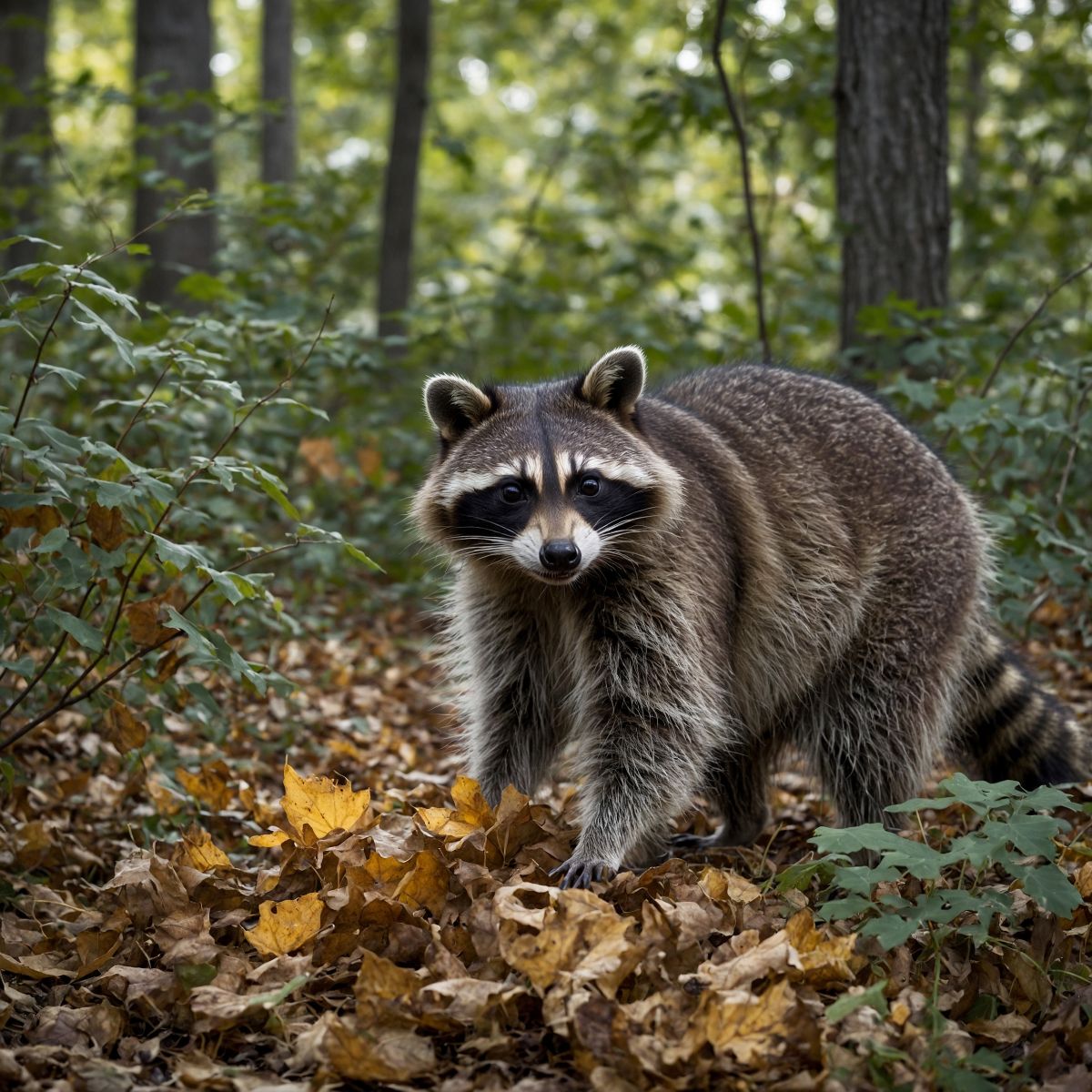Raccoon Calling 101

Raccoon Calling 101: Sounds, Setups, and Strategies
Several years ago, when I was dating my now husband, Nathan, he asked me if I wanted to go raccoon calling with him. We loved being outdoors, and most of our time spent together revolved around fishing, target shooting, and hunting. When he asked about raccoon calling, I had to admit that I’ve never heard of that, and I honestly didn’t think he was serious. After he convinced me he was indeed serious, we grabbed his hand-held electronic call and headed to his dad’s farm in southeastern Iowa. We loaded our .22s and we headed out to the timber.
A blanket of fresh snow had just fallen. He explained that this was good as it would encourage the raccoons to go back to their dens. So, now we just had to entice them out.
A good place to set up is where the raccoons den. So, if you’re walking through the timber, try to look for likely dens. They’ll use hollow trees, old barns, brush piles, rock crevices, or even old buildings as dens.
Calling
Raccoon calling involves using distress or fighting sounds to lure raccoons out of dens, brush piles, barns, or tree cavities. It is a similar concept to predator calling, but instead of using hunger for motivation, you try to pique the raccoon’s curiosity. This can include calling to get a territorial raccoon to come out of a tree, or a curious raccoon to see what is going on. Raccoons are naturally inquisitive, and if they hear a sound that resembles another raccoon in distress or a fight happening in their territory, they’ll often come charging in to investigate.
Nathan explained that some good call choices include: a raccoon fight sound, distressed kit or baby raccoon, raccoon chatter, raccoon squalling, and aggressive boar raccoon sounds. You might switch to a couple to see if the raccoons are feeling curious or if they’re feeling territorial. As with deer hunting, it depends on the mood of the animal.
We used an electronic handheld call. One where you hit a trigger, and the call goes off. You can also use hand calls, like a hand-held raccoon squaller. They can be just as effective. Since this first hunt, we’ve upgraded to a nicer, louder electronic call with a remote. There are a variety of electronic options, and they can play raccoon fight, distress, or kit-in-distress sounds at consistent volumes.
They’re great for keeping your hands free and placing sound away from your position, making raccoons focus on the caller rather than you. By placing the caller 10–20 yards from your position, this will draw attention away from you, so incoming raccoons focus on the sound, not your movement. Setting the call 10-20 yards away also lets you have a good view and a good shot at raccoons coming into the caller. If you get an aggressive boar barreling out of a tree, I think you’ll be happier with the call away from you, rather than in your hands. They will literally run to your feet trying to get to the sound.
Start with a lower volume. Begin your set with soft chattering or kit distress, then ramp up to louder fight sounds after a minute or two. Call for 5–10 minutes per location. Shut off the call, wait, and look around. You will want to look in trees for curious raccoons peeking out, and of course, on the ground for raccoons running into the call. Don’t forget to watch hollow logs and brush piles. After 15 minutes, if nothing shows by then, move to the next likely spot. Raccoons typically respond quickly if they’re going to. You should also be ready for a fast response. Raccoons can come barreling out of dens, sometimes climbing down trees aggressively. Keep your gun up and be prepared.
Best Time of Year
When Nathan took me out, it was in the winter, right after a fresh snow. This encouraged the raccoons to be in known den trees and hollow logs. You don’t have to wait for snow; you can go just about any time. The ideal window for raccoon calling typically runs late fall through winter. This is when raccoons are denning up. Cold snaps will push them into dens, but on milder winter days (especially after a stretch of frigid weather), they’ll often respond strongly to calls.
You can for sure have success calling just about any time of the year, but a winter day after a cold stretch has had good results for us.
For raccoons, their breeding season is January to February. During this time, boars can be especially aggressive and territorial. If you play some raccoon fighting calls, male challenge calls, during the rut, you’re likely to get a response from a boar.
Why?
You might be reading this and still wondering why people go raccoon calling. Well, several studies from midwestern states, including Iowa, South Dakota, and Minnesota, show that raccoons are hard on upland bird populations, especially pheasants, quail, ducks, and turkeys. Most of that impact happens during the nesting season when raccoons raid ground nests for eggs. Pheasant nests are particularly vulnerable because hens nest on the ground in light cover during late April–June. These studies also showed that once raccoons find a nest, they typically consume all eggs and may return to the same area repeatedly to look for more. Lastly, in Iowa, increased raccoon numbers have been linked to lower pheasant nest success rates. Iowa DNR’s furbearer surveys have shown raccoon populations increasing dramatically since the early 2000s, due to mild winters, more food sources, and reduced trapping activity.
On a different note, raccoon calling is a good way to introduce hunting to young kids or new hunters. As with any hunting, you aren’t guaranteed to see anything, but the sits are short, and when there are raccoons coming into the call, it’s pretty exciting!
Raccoons are both social and territorial. They’re drawn to sounds that suggest another raccoon is hurt (easy dominance display) or that rivals are fighting in their home turf. Their curiosity often overrides caution, which is why calling can bring even denning coons out into the open.
by Jessica Graham
December 2025
For Cattle and Dairy info links below:

